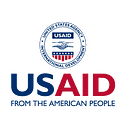Three Lessons for Making Sure Plans and Budgets Match National Health Priorities
The LHSS-JLN Learning Exchange on Institutionalizing Explicit Processes for Setting National Health Priorities
By Sarah Insanally and Julia Watson
It’s a shared frustration for many ministries of health seeking to advance progress towards universal health coverage: even when they follow well-established priority-setting processes, with inclusive stakeholder consultation, there is no guarantee that the resulting health priorities will be reflected in national health plans and government budgets.
Why does this happen? Practitioners from eight countries explored the issue as part of the Institutionalizing Explicit Processes for Setting National Priorities Learning Exchange, a forum for learning and problem solving facilitated by the USAID-funded Local Health System Sustainability Project (LHSS) in collaboration with the Joint Learning Network for Universal Health Coverage (JLN).
The learning exchange included health practitioners from Bangladesh, Ethiopia, Lao PDR, Malaysia, the Philippines, Rwanda, South Africa, and Thailand.
Top of the list of challenges facing countries is an asymmetric or opaque relationship between the ministry of health (MOH) and decision makers, including the ministry of finance (MOF). Learning partners described a lack of clarity on the criteria the MOF uses to make cuts when the budget ceiling for the health sector is less than the budget request. They agreed that while MOHs and MOFs share the goal of good budget management, an effective working relationship between the two ministries doesn’t happen automatically. It takes time, a shared willingness, and purposeful action on both sides.
As a starting point, MOHs can use a strategic triangle approach to be a better partner to stakeholders, including the MOF. The approach involves:
• Looking inward to identify gaps in capacity, systems, or procedures that undermine the MOH’s position in budget negotiations.
• Looking upward to MOH leadership — firstly, to set a vision and clear goals, and secondly, to demonstrate MOH political commitment to pursuing changes in the health budget by conducting dialogue with decision makers at the highest political levels.
• Looking outward to improve communication and transparency with the public to ensure that changes in health priorities align with people’s needs and expectations and so add public value. Having popular support for priorities as well as advocates in leadership positions helps strengthen the case for funding.
Countries in the learning exchange shared promising practices that MOHs can adapt to strengthen their partnership with decision makers. For example, the Philippines Department of Health engages political champions within the legislature to support the Health Executive Agenda for Legislation, which reflects national health goals and strategies, national and international commitments, and directives from the president, secretary of health, and health department executives. Champions are selected by mapping the interests of legislators to the agenda. The Department of Health works closely with the champions to share information, build their understanding of health priorities, and facilitate networking to gain the support of other legislators.
The Philippines Department of Health has also institutionalized a mechanism for generating and using evidence to support budget decisions. The department develops a Medium-Term Expenditure Program (MTEP), a three-year spending plan that reflects the estimated budgetary room for government health expenditure. This enables decision makers to see the programs and activities that can be delivered at different levels of funding and how the various cost scenarios affect progress toward UHC — the country’s overarching health goal, enshrined in legislation — as they consider how to link priorities to plans and budgets.
Key lessons for linking priorities to plans and budgets
The learning exchange offered practical lessons that MOHs in other countries can adapt to their own priority-setting processes to increase the likelihood that health priorities will be reflected in national plans and budgets.
Change to a medium-term mindset to account for inertia in the budget. It can be difficult to change priorities from one year to another and a more realistic approach is to aim for incremental change by shifting to a medium-term timeframe, as demonstrated by the Philippine experience using the MTEP as a regulatory and technical tool to align budget to priorities.
Share timely, accurate information to demonstrate the positive impact of investing in priorities. While it can be difficult to show the benefits of new investments, the MOH can develop short- and medium-term performance indicators to assess progress that can be jointly monitored by the MOH and MOF. Evidence from other countries’ experiences — such as systematic reviews — can also be useful to help inform decisions.
Strengthen technical and political capabilities within the MOH to make budget management and controls more efficient. This kind of capacity strengthening will also help MOH practitioners communicate the soundness and feasibility of budget requests using the economic language of the MOF. Admittedly, where there is high staff turnover, this capacity and institutional memory can suffer. Improving staff induction programs is one way to mitigate the loss. Even where staff are technically capable, there may be a need to improve their ability to manage politically.
Using these approaches, ministries of health can move from an inhibiting to an enabling environment for institutionalizing explicit national priority setting for health and, ultimately, improve access to high-quality health services for their populations.
To delve deeper into this topic, see the full report: Institutionalizing Explicit Processes for Setting National Health Priorities: Learning from Country Experience.
About the authors:
Sarah Insanally, DrPH, is a health systems specialist on the LHSS Project.
Julia Watson, PhD, is a health economics and financing specialist on the LHSS Project.
See other blogs in the LHSS priority-setting series:
What’s Getting in the Way of Fairer National Priority Setting for Universal Health Coverage?
How Countries Are Institutionalizing National Priority Setting for Universal Health Coverage
Getting Stakeholder Voices into the Health Priority-Setting Process
